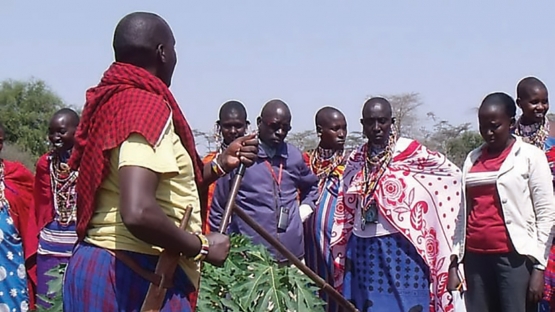Throughout their history, the Maasai have relied solely on herding for survival, viewing their livestock as both a sign and source of wealth. however, increasingly frequent and severe drought in the area they occupy across southern Kenya and northern Tanzania and the lack of land has meant devastating losses in cattle herds, leading the government to initiate programmes to introduce the maasai to a new survival strategy – crop production. The Joint FAO/IAEA Division of Nuclear Techniques in Food and Agriculture is working to introduce small-scale drip irrigation technologies to the Maasai who have no tradition of crop production but recognize that their survival depends on being able to make the most efficient use possible of their scarce water resources.
For the Maasai, livestock are more than their primary source of income. They are a cultural necessity. When Maasai greet each other, they don’t ask about the other person’s family. They ask about their animals. A Maasai prayer translates as “May the creator gives us cattle and children.”
In the Maasai culture, the men herd the animals. When there is a drought, they must take their herds to greater and greater distances searching for water and pasture, leaving women and children behind. Their pastoralist culture has never included growing crops because they have always relied on meat, milk and blood from cattle for protein and calories. However, as the drought scenario has worsened across Kenya and Tanzania, a huge number of animals have died, herds are smaller than ever, and the Maasai have had to rely on purchasing rice, maize and potatoes produced in other areas.
At the request of the Green Belt Movement, an NGO working in the area, the Joint FAO/IAEA Division of Nuclear Techniques in Food and Agriculture has coordinated with the Kenya Agricultural Research Institute (KARI) to introduce the Maasai to cropping, as a way to help them grow their own food and improve their nutrition. As they have no tradition of growing crops, the programme started by teaching horticulture techniques, introducing crops such as kale as well as fruit trees that provide nutrition but also have market value.
However, success requires more than learning how to farm. Due to the difficult agricultural conditions in the area, the Joint Division also works with KARI to identify simple but sophisticated nuclear techniques that will enable the Maasai to make the most efficient use possible of their scarce water resources in order to have optimum production.



